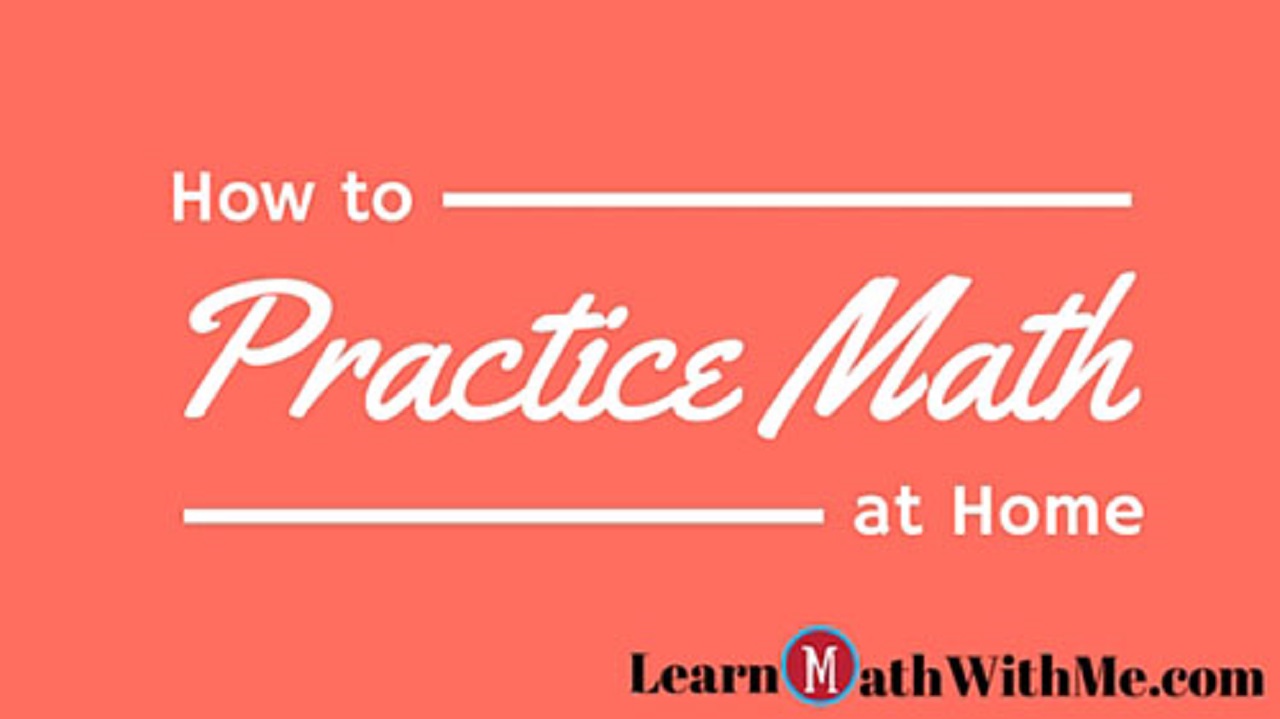
In the sports world, you often hear
No matter the course or grade-level, it is essential that the student listens, participates well, and takes good notes in class. (Of course the type of “notes” vary depending on the student’s age.) After being presented the material, now it’s time to practice.
Practice Drills
How are ways you can practice math? Let’s look at 6 “drills” a parent or student can use to practice math lessons.
- Homework - This is usually assigned by the teacher, and necessary for the student’s grade. But let’s look beyond grades. Encourage homework as a tool to reinforce the skills. This is the minimum practice that should be completed, but sometimes isn’t enough to fully grasp the subject matter.
- Extra worksheets - Sometimes it takes working several problems before a concept is really understood. Also, working different types of a problem is beneficial. I think that it’s useful to have access to answers to the problems. This is not to “cheat”, but to use as confirmation that you are working a problem correctly.
- View walk-throughs - If a student is having difficulty working a problem, it can be helpful to see someone working the problem. Video walk-throughs are a great tool for this...especially when you are at home and not with someone else that is able to help. At LearnMathWithMe.com, we offer Pre-Algebra worksheets and video walk-throughs.
- Flashcards - The use of flashcards can be beneficial in learning common formulas, identities, graphs, etc. The more something is placed in front of you, the more likely you are to commit those things to memory.
- Formula sheets/Organize notes - As with flashcards, when specific formulas are written out and reviewed, you are more likely to remember over time. Organizing notes, by rewriting or grouping similar concepts, helps reinforce concepts that you can apply and use while working practice problems.
- Call out problems and work out - This is a practice drill that we have used specifically in preparation for tests. Have someone call out a problem, and the student works the problem. We like to use mini white boards on which to work the problems. See our post with more details about the use of white boards.
How Many Problems to Work
When it comes to working practice problems, I do believe there are some limits. A student does not necessarily have to work 100 of the same type of problems just for the sake of working problems. One thing we want to avoid is burn out. Our goal is not to make a student hate math, but learn math and view it as a skill they need in everyday life. There is no set number recommended, but just a good variety of problems usually works well in preparing for tests and really learning the material.
Where to Get Extra Practice
Most textbooks have a good number of practice problems you can try. Also, there are various websites that have example problems for you to look at and try on your own.
At LearnMathWithMe.com, we offer worksheets, with answers, and video walk-throughs showing how to solve the worksheet problems. The lessons we currently offer go along with a Pre-Algebra curriculum. We plan to add not only more videos for this math class, but for others as well.
Visit the Videos link for a listing of the videos offered and for more information. If you are interested in a specific math course, including the same format of worksheets and video walk-throughs, please let us know by commenting below.
